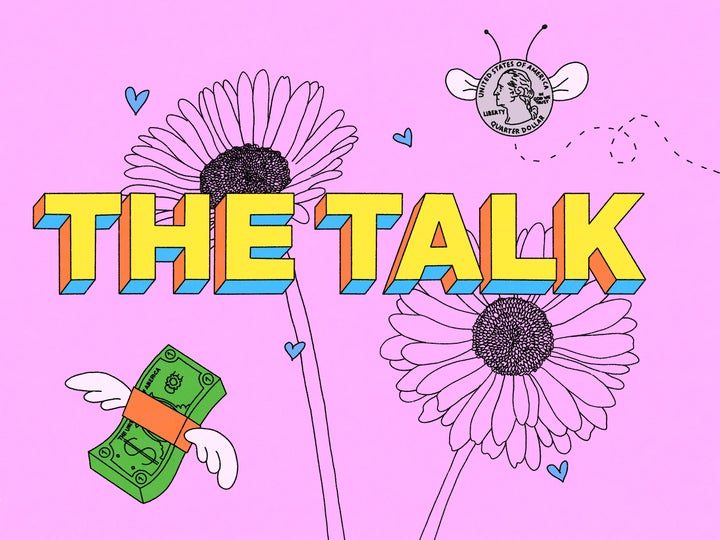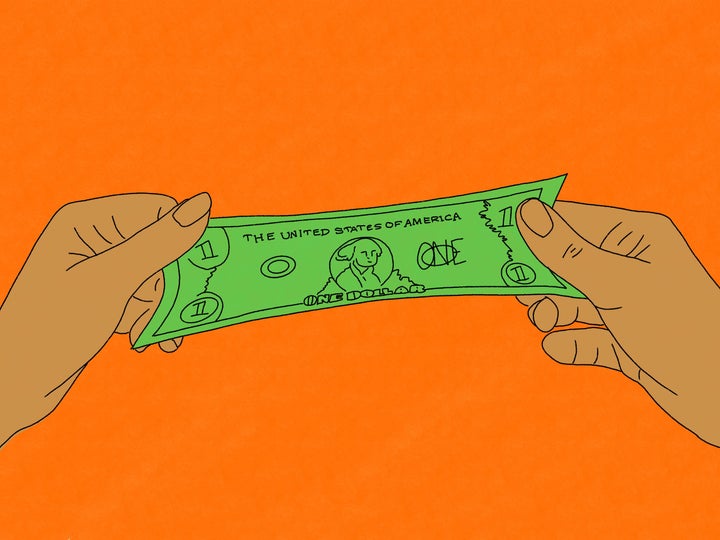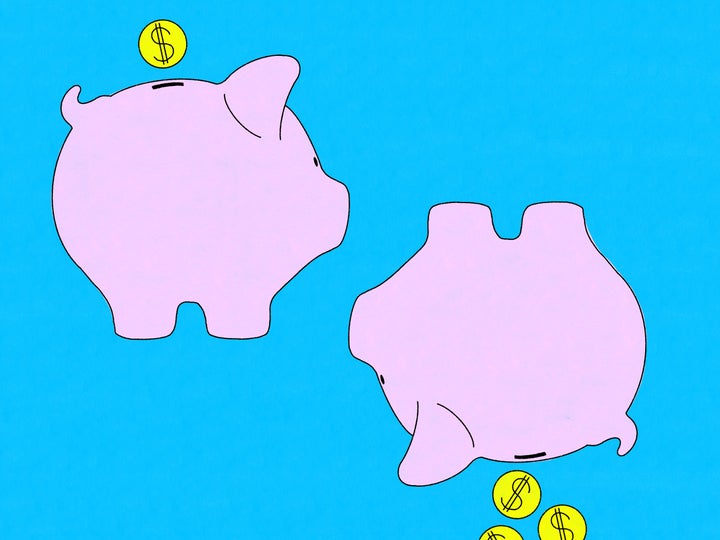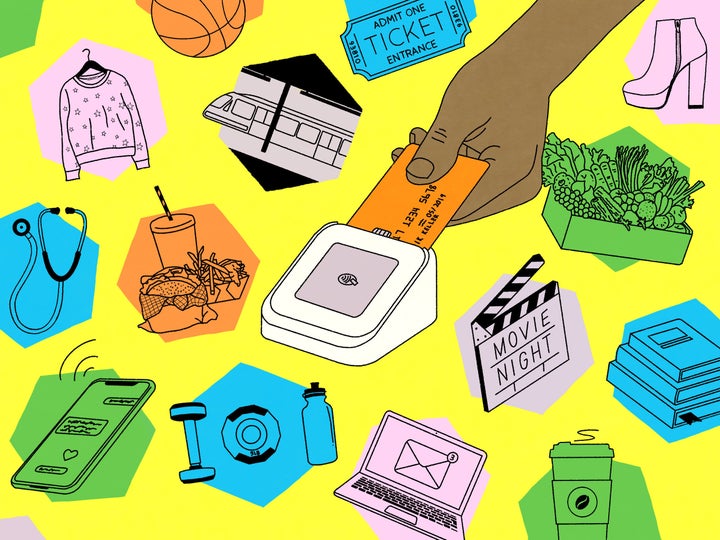
There comes a time in every young person’s life when they need to sit down with their parents and face the uncomfortable facts of life — it’s time for The Talk. After all, how else will they learn the truth about where bills and credit scores come from?
That’s right, you need to have the financial version of The Talk. (Good luck on the birds and bees, though, parents.) We teamed up with Relay, a personal finance tool that rewards smart planning habits with cash back, to present pointers for parents to help make sure their kids are on solid financial footing once they’re on their own, with the confidence and tools to navigate their lives independently. Planning for life expenses and being able to handle the ins and outs of budgeting, credit and stretching a dollar is just as essential for teens as it is for adults, and the earlier young people start forming healthy financial habits, the better. Studies have shown that children as young as 5 years old have already formed emotional reactions and opinions about spending and saving money, patterns that may last a lifetime, so the time to form a solid financial foundation for your kids is now.
Read on for tips to make “The Talk” less painful and set your kid up for financial success in college.

Start Early
The earlier you begin your child’s practical financial education — practice managing allowances and earning money with chores around the house counts just as much as teaching them how to keep a log of expenses and filing taxes for a summer job — the better. Roger Ma, a NYC-based certified financial planner, says, “The sooner you build awareness of some basic concepts, the better off you’ll be.” Because, as research shows, the habits that kids learn early in life can stick for decades to come. They have to learn concepts like never spending more than you take in and the value of money, and they’ll learn it from watching and listening to you, not in the classroom. “Money skills aren’t typically emphasized in school,” he says, “It’s a social lesson. We teach about math, social science, history, but not about how money works.”
Skip The PowerPoint
Rene Bruer, a certified financial planner in Tallahassee, Florida, and parent to two teenagers himself, says that it’s important to weave financial chat into everyday conversations and address questions as they come in, as opposed to sitting down for a serious family meeting once and calling the matter closed. “It’s really the impromptu discussions that are most valuable,” he says, recalling conversations he’s had with his kids. “It’s not mom and dad pontificating and lecturing.” Bruer acknowledges that it’s important to talk to kids about missteps too, like purchases that parents may regret or past financial mistakes like missing credit card payments and the consequences. It helps to keep it simple and educate through example, not a daunting lecture.
Provide The Tools
Ma recommends that parents make sure that before leaving home, their college-bound kids understand the financial tools available to them, like credit and debit cards to send money out the door and budgets, bank accounts and investments to have control over and grow their money. Kids do need to learn how to find deals and maintain a budget, as well as common sense about not buying cheap thrills and extra stuff, but they also need to understand the basic practical principles of credit and debit cards and how seemingly small fees can add up quickly: “From a debit card perspective, I would teach a child about minimizing and not incurring certain of those ATM fees, so either going to an ATM in the network or finding a bank that doesn’t charge ATM fees,” he says. Similarly, with a credit card, teaching kids that leaving a balance month-to-month, even if the minimum payment is made, means that interest is incurred and “the purchases you made in the prior month are going to be much more expensive.” Additionally, annual fees on certain bank accounts and credit cards can also be easy to miss.

Try Training Wheels
While your kids are still living at home, it’s useful to help them set up a bank account and credit card that you can monitor to teach them the basics of budgeting, cash flow and making payments. Think of it as money management 101. Ma recommends a joint credit card (with a low credit limit to fend off any potentially big mistakes from the get-go) that the parent has full transparency into, but the child funds and manages. “The fact that it’s a joint card gives the parent access if they want to be a helicopter parent, but really empowers the student to get in that habit of checking the statement themselves each month and paying it in full and building their credit score at the same time,” he says.
Additionally, parents could help teach kids to budget by giving them a lump sum to work with over time. For example, if you typically give your child $5 per school day for lunch, try giving them a week or a month all at once and help them keep on track with their spending for the whole period it’s meant to last. It’s great practice for stretching money and for living off of a paycheck later in life.
Let Them Stumble
While you should be an ally to your kids in their financial education, that doesn’t mean you can — or should — protect them from their own bad decisions. To help kids understand cash flow, it can be important to let them make some frankly silly purchases.
“You start early,’” Bruer says, giving the example of a teen using birthday money to pick up a cheap shirt at a fast-fashion store that they wear for a month and then get tired of or tear a hole in. You might want to discourage them from blowing their money on an inexpensive thrill, but, “Look, they’re not buying a car. Let them see the impact of that purchase and the short-term pleasure, and the long-term regret. Let them go through that in a very protected kind of guided environment… They have to be allowed to make a mistake so they can feel all of those emotions for themselves and then one thing we’ve noticed over the years is they make better choices and say, ‘Hey, I want to save more.’”
By letting them make some smaller missteps, you’re teaching them how to find solid financial footing and experience satisfaction with their finances in the future.

Lead By Example
Kids are always watching, so it’s important to model good financial behavior and choices. Ma suggests taking the kids along while shopping for groceries, clothes and household items and discussing real-world costs and choices, and how to stretch a dollar. “Looking for deals, for coupons, things like that, getting that behavior ingrained into a child so they’ll do the same thing when they’re on their own,” he says. “My parents would always look for stuff on sale or coupons while traveling. I like that I saw them doing cash-back shopping or some other thing because I became aware that you don’t have to pay full price for things.” For example, you can talk about the new TV the family would like to buy, and comparison shop between stores, find cash-back options and promo deals, and look out for seasonal and holiday sales that could bring the cost down.
Practice Makes Perfect
The old adage stands, and kids will ultimately learn best by doing. Try putting your kid in charge of the family’s meal plan for a week and give them a grocery budget to shop for the dinners. “I think it’s imperative that you take your kids when you go shopping so they see that you go in responsibly with a list,” Bruer says, “and [then you can] say, ‘Hey, if it’s not on the list, you’re not getting it.’” When they blow the budget — and they almost inevitably will, at least once — they have to figure out swaps and deals that will make it work, like buying a generic or store brand instead of a name brand. And if they can’t parse it out on their own, then you can step in to fill in the gap.
Make It Personal
The most important lesson you can drive home, Bruer says, is that their money is their responsibility, and that they have to be their own best advocates, just as you have been through budgeting, financial literacy and smart financial decisions.
“You have to be the biggest defender,” he says of the lesson to impart to kids. “You have to let people into your castle of money, and there’s always people knocking on that gate: retailers, friends, family, your own desires. Ultimately, you’re the one opening up that gate.” Parents, he says, can help their kids guard the gate as long as they’ll let them, but the ultimate goal is to instill good financial habits so kids can be successful on their own.
From Relay:
Relay is a planned-spending account and card that lets account holders earn amazing cash back rewards on money they use to cover everyday spending. It’s your money, why not make it work harder for you? From providing your kids with a budget when they’re living away from home to paying for a dream vacation, Relay is a great way to increase your purchasing power. Learn more at relayrewards.com.
This article was paid for by Relay and co-created by RYOT Studio. HuffPost editorial staff did not participate in the creation of this content.